Novitas Chem Solutions
NACO Extreme S6 diesel engine oil 60KM fleet trial report
By Dr. Harry Henderson, Consultant, NACO Shanghai | TLT CMF Plus November 2016
The Power Train Lubrication industry today faces several major technical challenges such as Fuel Economy under fresh and used conditions, reduced emissions, and improved engine/equipment durability. Such technical challenges have led to breakthroughs in new component chemistry and base stock development. For instance, traditional solvent refined base stocks are being replaced with hydroprocessed (Group II and Group III) and synthetic alternatives such as PAO (Group IV) and polar base oils (Group V) such as esters and Aromatic base oils (
Figure 1).
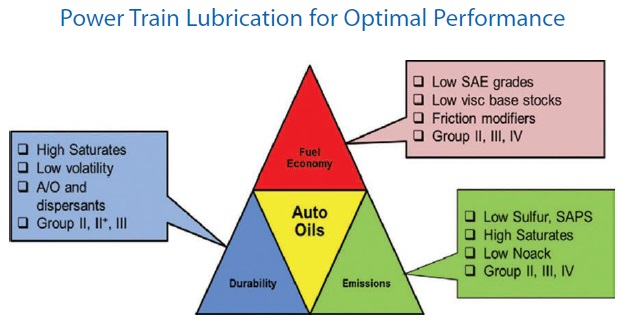 Figure 1. New components /approach such as the use of antioxidants, novel VI improver and friction modifiers are hot subjects of pursuits in automotive industry.
Figure 1. New components /approach such as the use of antioxidants, novel VI improver and friction modifiers are hot subjects of pursuits in automotive industry.
NACO Shanghai is the manufacturer of high viscosity PAO and Alkylated Naphthalene. Today, in light of these challenges presented by the power train industry, NACO Shanghai taps into these high viscosity base oils, PAO150 and AN23 specifically, for the formulation of heavy diesel engine oils as means to 1) eliminate the need of VI improvers, the polymers that are known to shear down during use, and to 2) enhance additive/sludge dispersancy with AN23’s built-in polarity and thermal stability/antioxidancy attributed to its unique molecular structure (
see Scheme 1, tri/tetra-substituted, star-shape isomers, in bracket). The same combination (high viscosity PAO and AN23,
Table 1) has also been proposed as a synthetic bright stock candidate in 2014 ICIS & ELGI, Industrial Lubricants Conference, November, 2014.
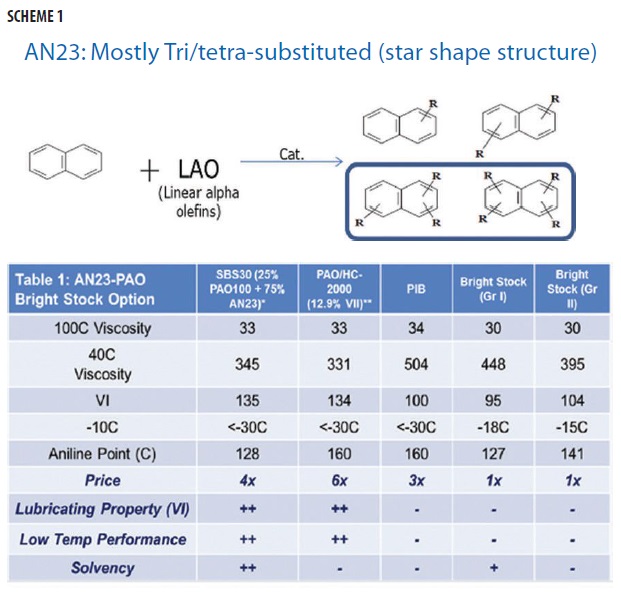
At last year’s STLE commercial forum we presented the 20KM field trials results that clearly show the enhanced shear stability with a minimum of viscosity change while maintaining the fluid stability/integrity during use. In this presentation we wish to present the 60,000 KM field trial results of NACO Extreme S6 (
Table 2) via bus fleets (
Table 3) as well as emission engine testing (
Figure 7).
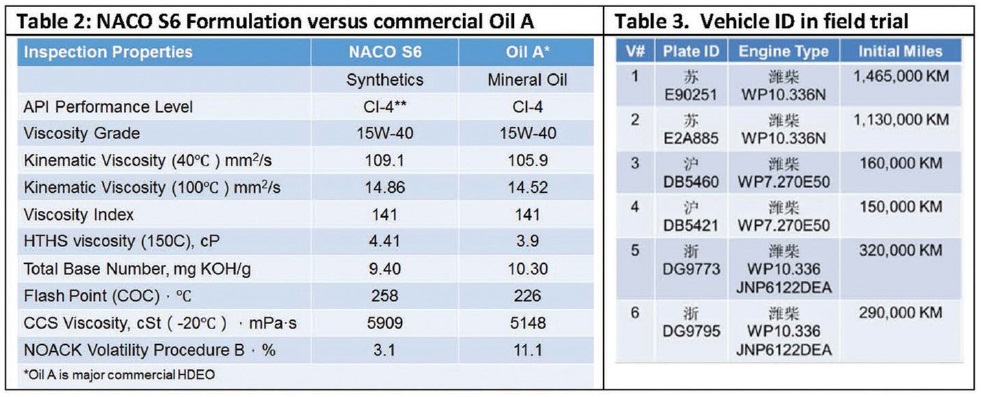
With the exception of E90251, a high mileage bus with more than 1.465M KM driving miles, NACO S6 (
Figure 2) has maintained its viscosity with less than 1-2cSt 100C viscosity increase as opposed to traditional oils that would have shown viscosity thinning (reduction due to shear down) more than 20%. This ability to resist viscosity thinning and higher HTHS viscosity (see
Table 2) re-affirm that NACO Extreme S6 delivers more fluid power to commercial bus drivers.
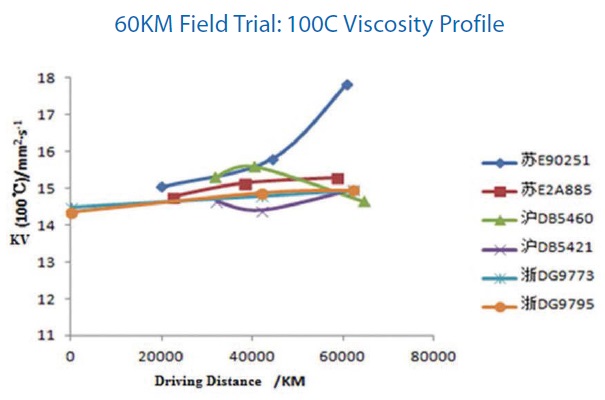 Figure 2. NACO Extreme S6 had minimum kinematic viscosity change within 60,000 KM.
Figure 2. NACO Extreme S6 had minimum kinematic viscosity change within 60,000 KM.
*E90251 1,465,000 KM had a greater kinematic viscosity increase, but is within 20%, attributed to the excess acid generated during combustion and hence the viscosity increase.
Throughout the field trial, NACO monitored an extensive set of parameters for oxidation and nitration, TAN and TBN, as well as wear metals such as Fe, Cu, and Al and many other elements (Cr, Pb, Sn, Si). Again with the exception of E90251, analysis of the used oils taken during 60KM trial runs gave a consistent picture of minimum oxidation (
Figure 3), good additive retention (a 1.1 average TBN drop,
Figure 4), with minimum wear metals such as Fe (
Figure 5), Cu (
Figure 6), Al, a clear evidence of good lubrication, again, attributed to its high HTHS viscosity (see
Table 2). Even for E90251 we are surprised that it completes the 60KM run with acceptable results.
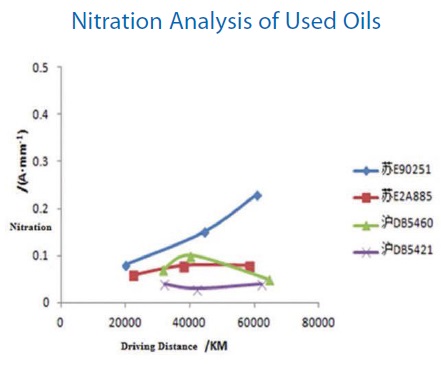 Figure 3.
Figure 3.
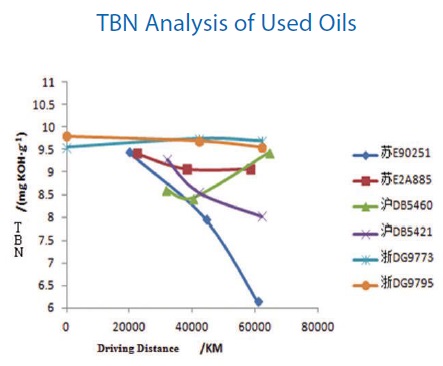 Figure 4.
Figure 4.
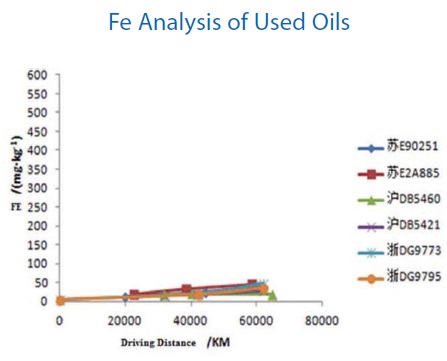 Figure 5.
Figure 5.
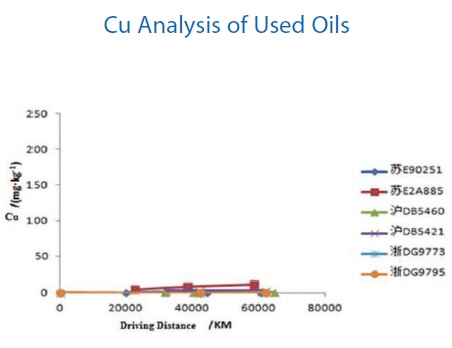 Figure 6.
Figure 6.
Given the strong performance of S6 we initiated complete emission engine testing (
Figure 7) to further determine the impacts/benefits of AN23 side by side with a commercial candidate. To our surprise we see S6 produced slightly increase (2.5%) of NOx (see
Table 4), a sign of more complete fuel combustion that leads to better fuel economy. S6 shows a significant drop of particulates/PM levels (7.1%) and smoke levels (28%), another signs of better (a more complete) fuel combustion.
 Figure 7.
Conclusion
NACO S6 gives excellent performance/durability in multiple 60,000 KM field trials
Figure 7.
Conclusion
NACO S6 gives excellent performance/durability in multiple 60,000 KM field trials in terms of viscosity, oxidation and nitration, TAN and TBN, and wear metal controls. Further emission engine testing shows a surprising/outstanding 7.5% PM and 28% smoke reductions. We attributed these positive results to the use of high viscosity PAO150 and polar AN23 base oils. NACO has since expanded AN23 production and launched more and new SynNaphTM base oils to support increased worldwide demands/developments.